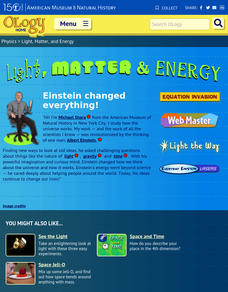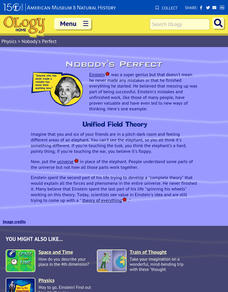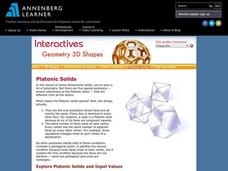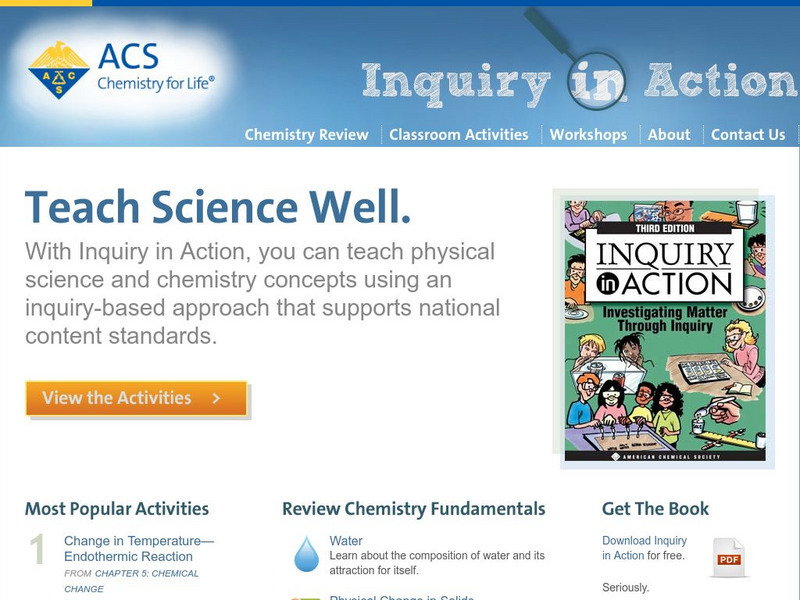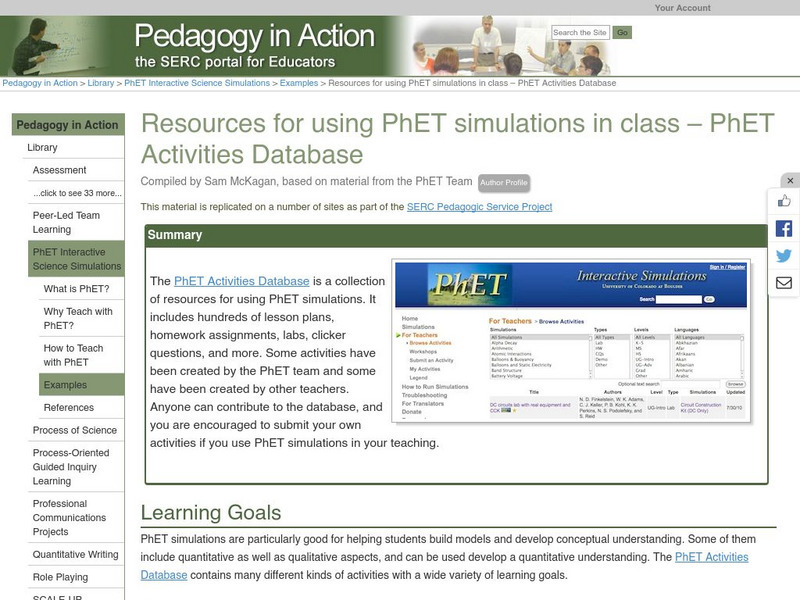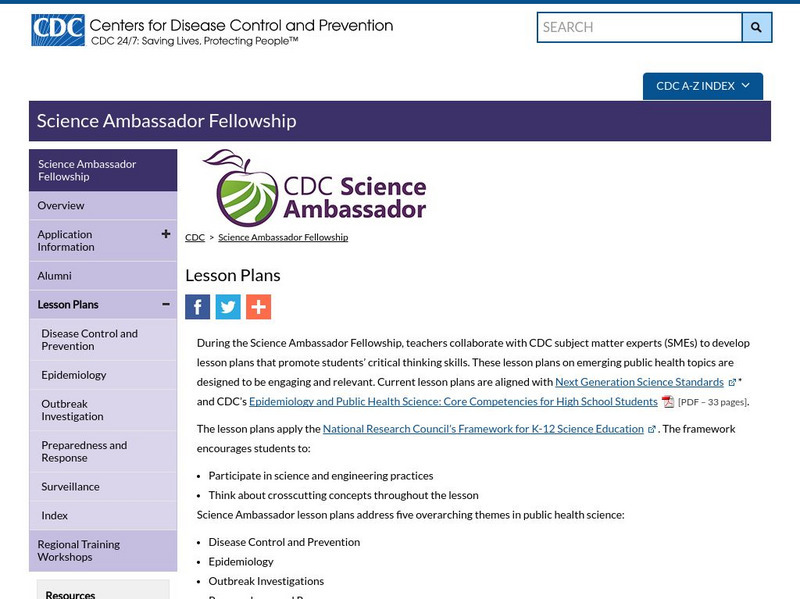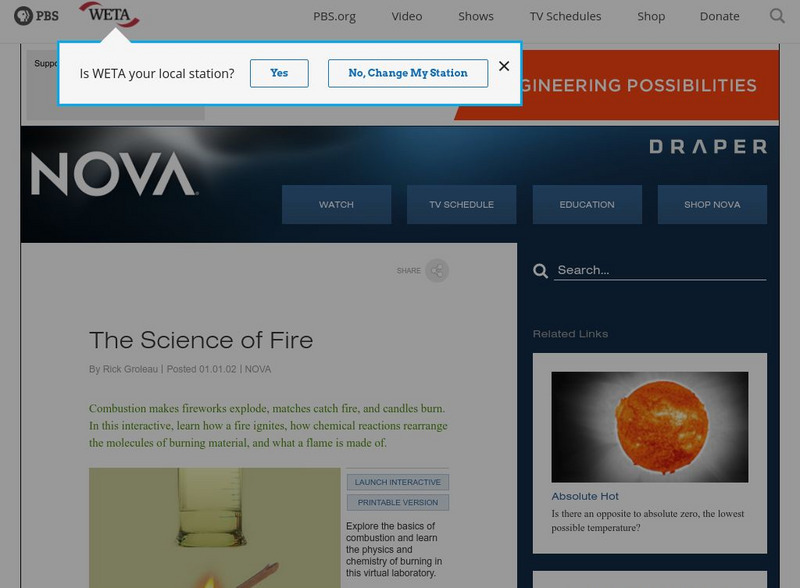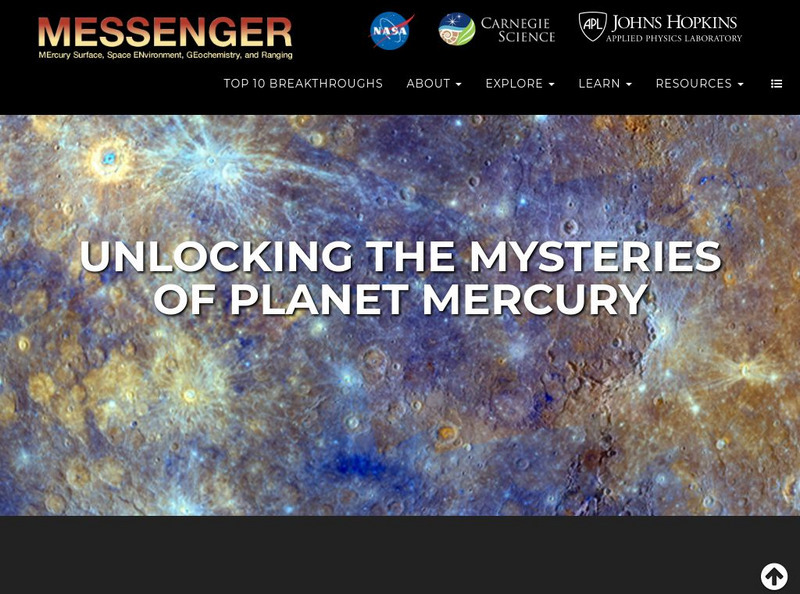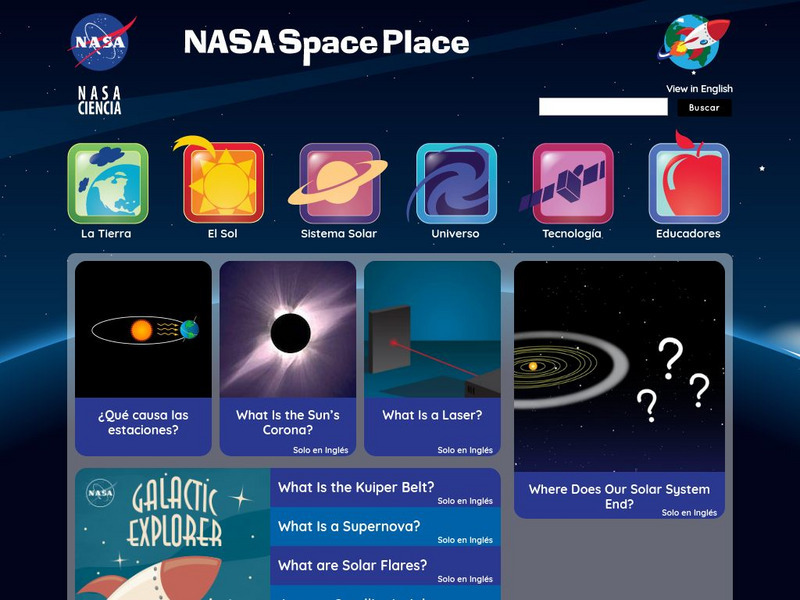American Museum of Natural History
Light, Matter and Energy
Let Einstein's work shine the way. Pupils read about Einstein's iconic equation, E=mc^2, using a remote learning resource and see how ideas from other scientists such as Kepner, Curie, Galilei, and Newton led to its discovery. They...
American Museum of Natural History
Train of Thought
Hop aboard the train of thought. A remote learning resource has learners consider thought experiments to consider scientific theories. It provides two examples, one on orbiting bodies and the other on the speed of light, for them to work...
Annenberg Foundation
Geometry 3D Shapes: Euler's Theorem
How do you get a theorem named after you? Euler knows what it takes! The third lesson of five asks pupils to use an interactive activity to compare the faces, vertices, and edges of seven different three-dimensional solids. They use...
American Museum of Natural History
Space and Time
Carve out some time to learn about space-time. Young scientists use a remote learning resource to read up on the relationship between space and time. They consider the idea of relativity, see how objects with a large mass can bend space...
American Museum of Natural History
Einstein in Time
Einstein sure had an interesting life. Using a remote learning resource, pupils examine a timeline of Einstein's life. They learn about the major scientific discoveries as well as humanitarian and social work. Additionally, they read...
American Museum of Natural History
Beyond T. Rex
Some dinosaurs get all the attention. Pupils use an interactive resource to study some of the lesser-known dinosaur species. Organizing the information in a cladogram allows learners to make connections among the species.
American Museum of Natural History
Nobody's Perfect
Even Einstein made mistakes, you know. A remote learning resource explains how scientists are sometimes unsuccessful. Pupils learn about Einstein's failed quest to find a unified field theory that explained the entire universe.
Curated OER
Bermuda Triangle
Young scholars explore what the Bermuda triangle is and the theories as to why it is so mysterious. In this mystery lesson students read and discuss the history and the mystery behind the Bermuda Triangle.
Annenberg Foundation
Geometry 3D Shapes: Platonic Solids
From polyhedrons to platonic solids, here is a lesson that will have your classes talking! As an introduction to platonic solids, scholars cut and fold nets to create the three-dimensional solids. They use an interactive component to...
American Chemical Society
American Chemical Society: Inquiry in Action: Teach Science Well
Online textbook reviews fundamentals of chemistry and physical science via slideshow presentations, notes, and videos. Materials for classroom activities engage students in inquiry-based, hands-on investigations covering molecular...
American Chemical Society
American Chemical Society: Inquiry in Action: Teach Science Well
Online textbook reviews fundamentals of chemistry and physical science via slideshow presentations, notes, and videos. Materials for classroom activities engage students in inquiry-based, hands-on investigations covering molecular...
Other
Funology: The Science of Having Fun
See what the "science of having fun" is by learning jokes and "wacky facts", playing games, and trying magic tricks and simple recipes. Great ideas for enjoying science with classmates, friends, and family.
Science Education Resource Center at Carleton College
Serc: Resources for Using Ph Et Simulations in Class Ph Et Activities Database
The PhET website at the University of Colorado in Boulder has a large collection of science simulations for teaching chemistry and physics, available in many languages. This page describes the Activities Database, which is searchable by...
Centers for Disease Control and Prevention
Centers for Disease Control: Science Ambassador Fellowship: Lesson Plans
This site gives many lesson plans for teaching middle and high school students about current and relevant science topics like autism, ADHD, Diabetes, Fetal Alcohol Syndrome, birth defects, genetics, and more. The lessons are based on...
PBS
Pbs: The Science of Fire
A virtual experiment bringing you to the center of combustion! Understand how fire ignites, what makes a flame, and how molecules rearrange themselves in chemical reactions. This interactive activity gives students four different...
American Association of Physics Teachers
Com Padre Digital Library: Physics to Go: Explore Physics on Your Own
Contains a full physics curriculum with links to games, webcasts, and activities. By creating a free account, students and teachers can create their own personal collection of resources.
Optical Society
Optical Society of America: Optics for Kids: Exploring the Science of Light
A collection of information on the science of light and optics. Features a wide variety of resources: key events in history, reference materials, multimedia links, optical illusion activities, glossary of optics terms, and information on...
Concord Consortium
Concord Consortium: Molecular Workbench
Numerous molecular biology interactive activities along with a program that can automatically keep models and reports to keep track of progress.
Johns Hopkins University
Applied Physics Laboratory: Messenger Home
Home page for NASA's Discovery Program Messenger to the planet Mercury. Site provides details of the planned mission, its experiments and the science and management teams. Linked Quicktime animation files are very large and detailed....
Pennsylvania State University
Applied Physics: Vibrational Modes of a Circular Membrane (Drums)
Site tracks the vibrations of a drum and provides an animated movie.
Scholastic
Scholastic:magic School Bus Themes Index
Magic School Bus cross referenced by themes to provide quick access to many activities and references.
NASA
Nasa: Oceanography
Join NASA in its study of oceanography and learn about the Earth system, the physical ocean, and life in the ocean. Try out the Giovanni: Earth Data Visualization Tool and access satellite-derived data to enhance the learning experience.
NASA
Nasa Space Place: El Space Place
NASA's space science site for kids - en Espanol. Features a wide range of activities, including games, projects, animations, and more. Also contains useful information on basic physics, chemistry, and other natural sciences, offering...
Other
Paper Plate Education: Serving the Universe on a Paper Plate
Excellent resource for "paper-plate" activities that help simplify various astronomy topics. Learn how to build a "Moon Finder" and "Planet Pointer," and create a paper-plate model that explains the Transit of Venus.
